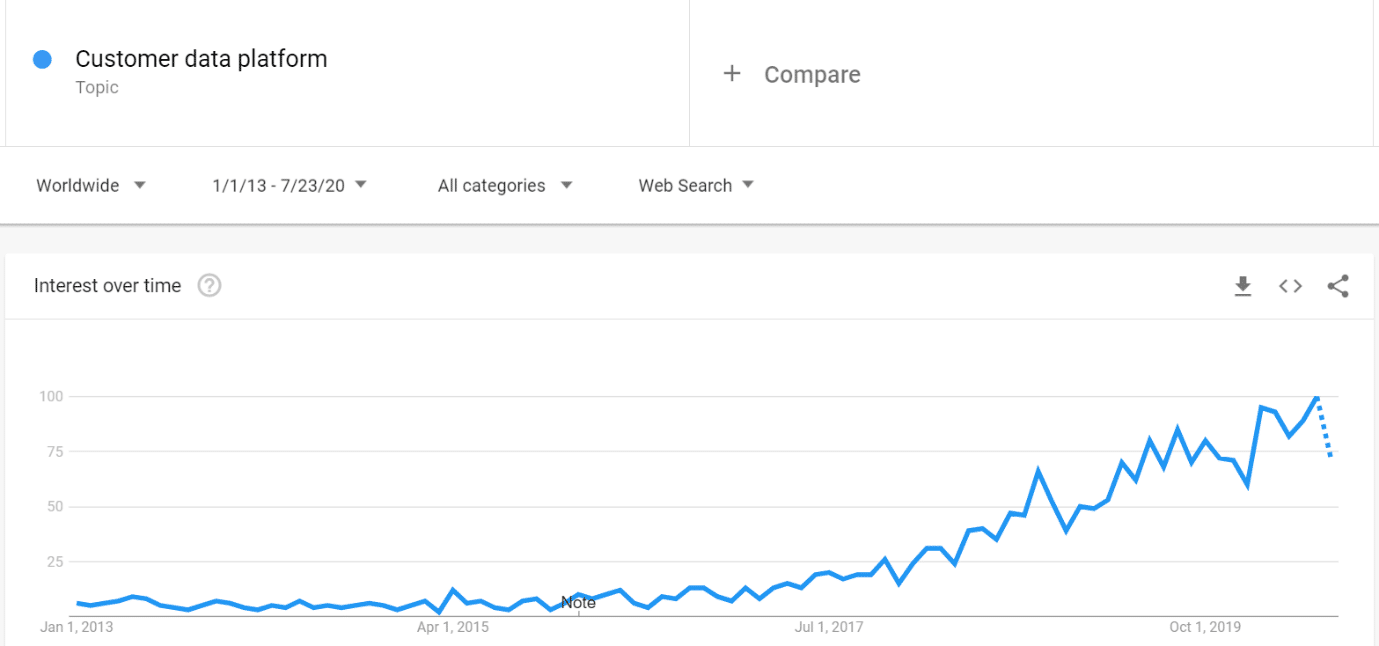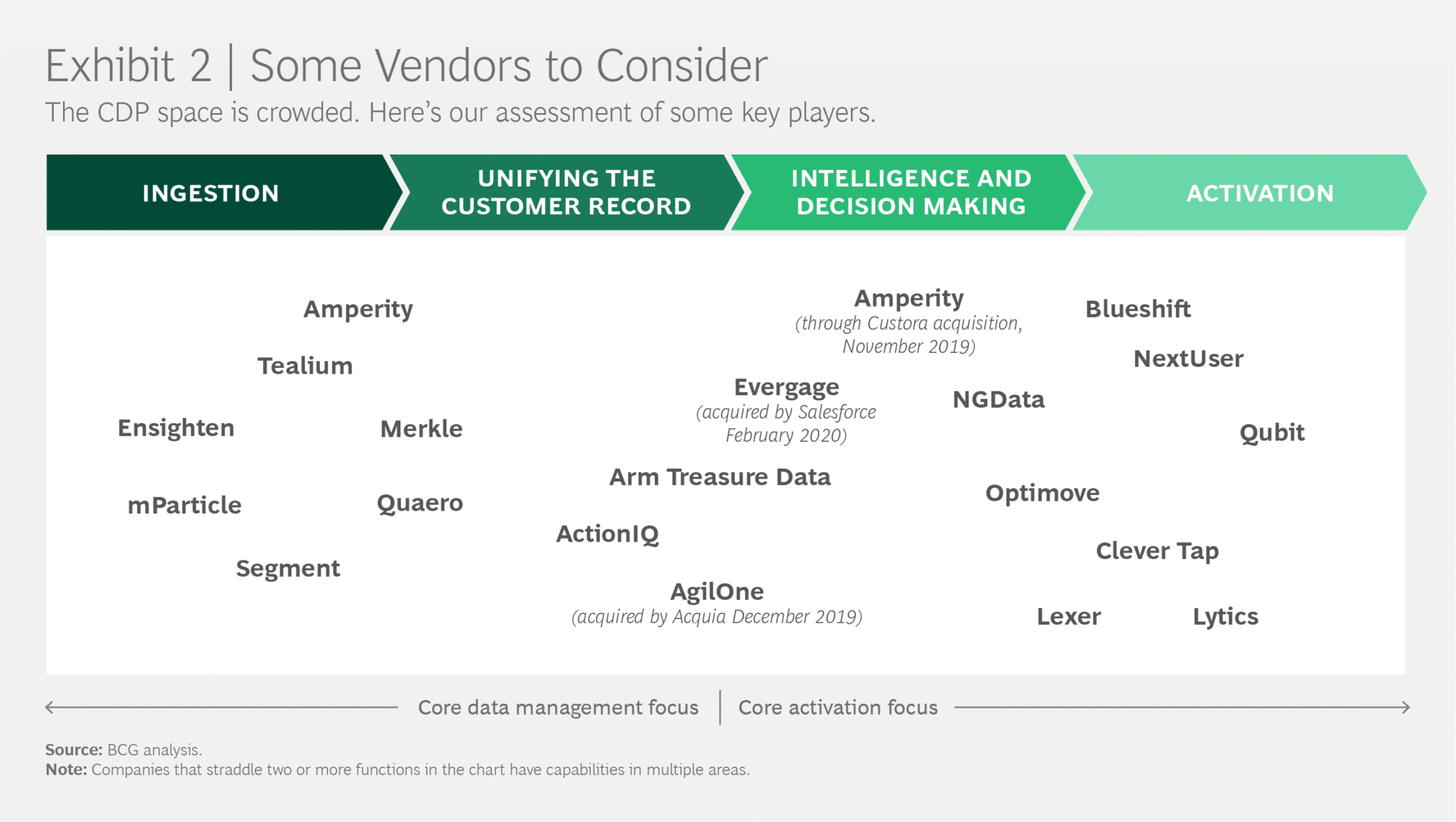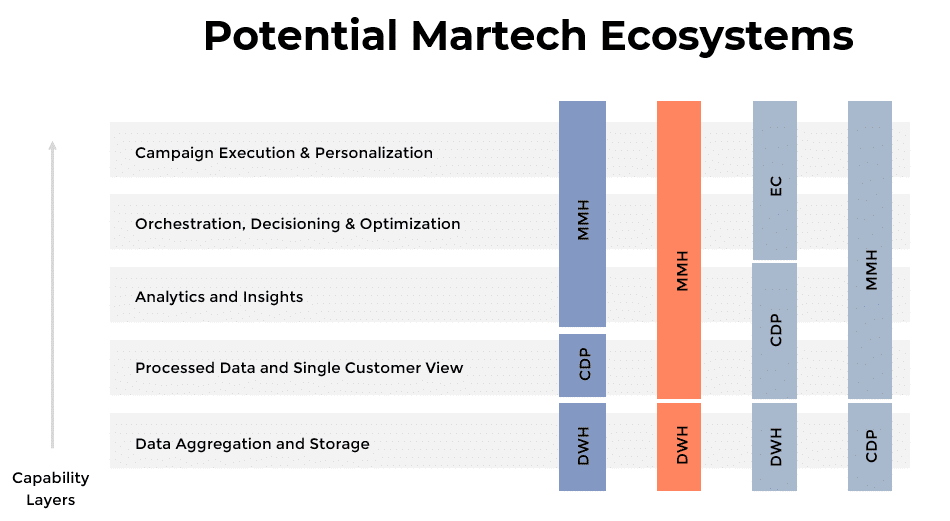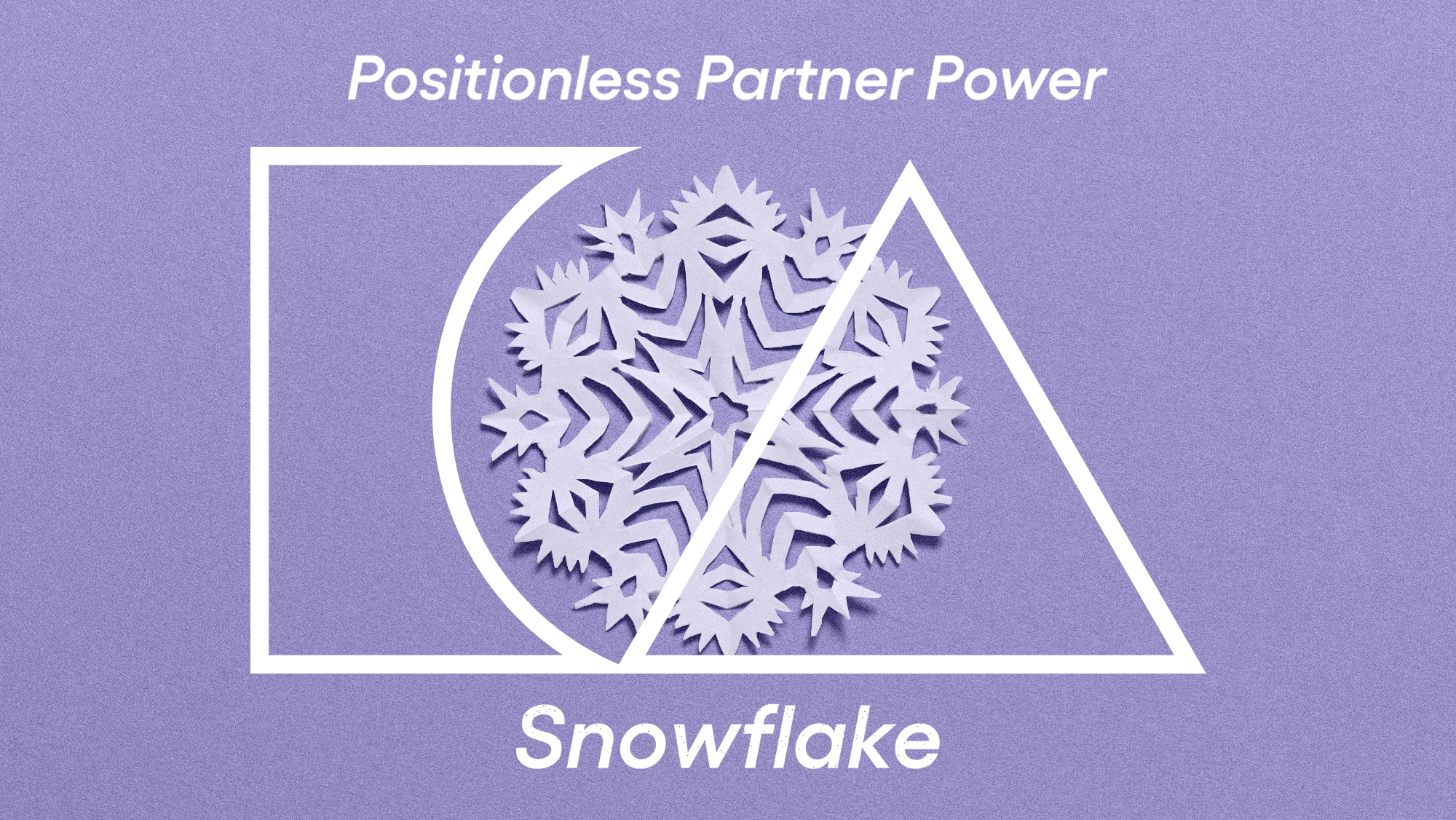
AI and the Retail Marketer’s Future
How AI transforms strategy and processes, driving the adoption of Positionless Marketing
Exclusive Forrester Report on AI in Marketing

The term Customer Data Platform (CDP) was coined in 2013 by David Raab from the CDP Institute. By 2016, interest in the category began to take off and in 2018 CDPs went mainstream. Somewhere along the journey, the essence of this technology changed. Originally created with “systems that gather customer data from multiple sources, combine information related to the same individuals, perform predictive analytics on the resulting database, and use the results to guide marketing treatments across multiple channels”, today almost every marketing technology category has a vendor calling itself a CDP. Now this is not a blog about trying to make sense of this market, we’ve done that before, but rather a blog on the tectonic shift that is coming the category’s way.
2019 became known as the “year of the CDP” where seemingly every other vendor in the martech world started calling itself a CDP or stating they possessed “CDP-like capabilities.” This of course was in clear response to marketers’ growing interest in the category, as can be seen by the worldwide search trends (on Google) for the term “customer data platform.”
 Instead of the category evolving organically and developing new capabilities, it was flooded with fringe capabilities that distorted its perception. The new influx of pseudo-CDPs did little to help potential buyers evaluate vendors. Actually, they probably ended up more confused than ever.
Somewhere there is a parallel reality where this did not happen. In this reality, CDPs evolved organically to include more than mere activation capabilities but actual decisioning and orchestration capabilities. Granted, some CDPs in our reality did develop these capabilities, but these advancements have gotten lost and are rarely consider core to the category. Rather being described as a “nice to have.”
Back in our own reality, one thing became clear in marketers’ minds, the road to improved customer experiences and personalized interactions went right through unified customer profiles that are accessible to marketers. The question now is which technology should provide this unified customer profile.
Instead of the category evolving organically and developing new capabilities, it was flooded with fringe capabilities that distorted its perception. The new influx of pseudo-CDPs did little to help potential buyers evaluate vendors. Actually, they probably ended up more confused than ever.
Somewhere there is a parallel reality where this did not happen. In this reality, CDPs evolved organically to include more than mere activation capabilities but actual decisioning and orchestration capabilities. Granted, some CDPs in our reality did develop these capabilities, but these advancements have gotten lost and are rarely consider core to the category. Rather being described as a “nice to have.”
Back in our own reality, one thing became clear in marketers’ minds, the road to improved customer experiences and personalized interactions went right through unified customer profiles that are accessible to marketers. The question now is which technology should provide this unified customer profile.
In a BCG article on how CDP’s can lead to one-to-one personalization, they swiftly breakdown the CDP vendor landscape into two categories – those with a core data management focus and those with a core activation focus.
 The left side of the spectrum a purer form of CDP, closer to the 2013 platforms that inspired the term. The right side, a different form of CDP one closer to what could have been the natural evolution of the category.
The left side of the spectrum a purer form of CDP, closer to the 2013 platforms that inspired the term. The right side, a different form of CDP one closer to what could have been the natural evolution of the category.
In Gartner’s 2020 Hype Cycle for Digital Marketing (subscription required) CDP’s are dead center on the “Trough of Disillusionment” as a result of the confusing and crowded market vendors have created. The current situation sets the stage for one of two paths. Both with gigantic implications.
The first path leads to the death of the category. Just as indecision might have killed the cat, the CDP market might succumb to its inability to define itself. If two vendors at opposite ends of the spectrum delimited by BCG can find themselves at the same table competing for exactly the same RFP, something is broken. Marketers will eventually tire from the confusion and settle on the capabilities their current solutions, such as marketing clouds, provide. Which leads us to a second path.
A seismic shift where the category splits. One half, the true to its roots or core data management focused side, continues to be recognized as a CDP. The second half moves on from defining itself as “only a CDP” to defining itself as something else, such as a multichannel marketing hub (MMH), with customer profile unification and management capabilities.
This isn’t to say that every MMH will have CDP capabilities nor that every CDP on the right side of the spectrum will be an MMH. But rather to say that vendors in this and other adjacent categories will use these profile unification and management capabilities as a differentiator and an added value against their competition.
The resulting more focused CDP category would lend itself for specific use cases of complex data ingestion, unification and stewardship. While stopping from claiming orchestration and execution capabilities best left to others. Companies interested in acquiring these CDPs would hand over their keys to technical teams or marketers who are comfortable using more “technical” solutions.
These refocused markets could coexist side-by-side while providing organizations with a clearer picture on how to combine and leverage them as part of existing martech ecosystems.
 For example, large enterprises could combine both a CDP and an MMH above their legacy data warehouses. In this setting, the CDP would focus on integrating, cleansing, and unifying all the data with the help of the enterprise’s data engineering team. The cleansed data would be passed to the MMH where non-technical marketers would be able to access a single customer view and use sophisticated decisioning tools and algorithms to orchestrate hundreds of segments and campaigns with ease. Some will even venture further into this best-of-breed approach and include point solutions as execution channels connected to the MMH.
For companies whose data is more “in order” from the get-go, a data warehouse might not be needed at all. While for companies with a limited number of campaigns and/or channels, meaning no need for sophisticated orchestration and decisioning, an MMH might not be required.
By refocusing the category definition, clarity will be gained, the CDP category might just be able to fulfill its promise and marketers might be able to finally make sense of it all. But for this to happen, the market needs to take a strong look in the mirror and decide. Either that or face the path towards category extinction. And categories don’t have nine lives.
For example, large enterprises could combine both a CDP and an MMH above their legacy data warehouses. In this setting, the CDP would focus on integrating, cleansing, and unifying all the data with the help of the enterprise’s data engineering team. The cleansed data would be passed to the MMH where non-technical marketers would be able to access a single customer view and use sophisticated decisioning tools and algorithms to orchestrate hundreds of segments and campaigns with ease. Some will even venture further into this best-of-breed approach and include point solutions as execution channels connected to the MMH.
For companies whose data is more “in order” from the get-go, a data warehouse might not be needed at all. While for companies with a limited number of campaigns and/or channels, meaning no need for sophisticated orchestration and decisioning, an MMH might not be required.
By refocusing the category definition, clarity will be gained, the CDP category might just be able to fulfill its promise and marketers might be able to finally make sense of it all. But for this to happen, the market needs to take a strong look in the mirror and decide. Either that or face the path towards category extinction. And categories don’t have nine lives.
Exclusive Forrester Report on AI in Marketing
In this proprietary Forrester report, learn how global marketers use AI and Positionless Marketing to streamline workflows and increase relevance.


Rony Vexelman is Optimove’s VP of Marketing. Rony leads Optimove’s marketing strategy across regions and industries.
Previously, Rony was Optimove's Director of Product Marketing leading product releases, customer marketing efforts and analyst relations. Rony holds a BA in Business Administration and Sociology from Tel Aviv University and an MBA from UCLA Anderson School of Management.


